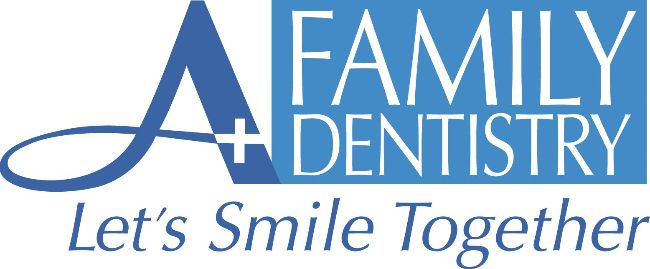Navigating Wisdom Tooth Extraction: What to Expect Before, During, and After
Prior to wisdom tooth extraction, your dentist reviews X-rays, examines your teeth, explains anesthesia options, and guides you on how to get ready. During removal, your dentist will open the gum, take out the tooth, clean the area, and place stitches to protect the healing site. Afterward, you'll learn how to manage pain, eat safely, and care for your mouth.
Does the thought of wisdom tooth removal make you nervous? Understanding what happens before, during, and after the procedure can help mitigate the fear and give you a sense of control.
Wisdom tooth removal is routine but still delicate. Knowing what to expect at every stage builds confidence and leads to a smoother, safer experience.
Will Wisdom Tooth Extraction Be Painful?
You'll receive anesthesia before your wisdom tooth extraction, so you won't feel pain during the procedure. You might sense some pressure, but the area stays numb until it's done.
After the extraction, some pain sets in as the anesthesia fades. The first two days are often the toughest, with aching or swelling as your gums start to heal. Follow your dentist's care plan and take medication as directed to ease the pain and speed recovery.
What Type of Dentist Removes Wisdom Teeth?
A dentist for wisdom tooth removal is usually an oral and maxillofacial surgeon. They specialize in treating complex tooth and jaw conditions that involve surgery, including impacted or partially erupted wisdom teeth.
Your regular dentist may also remove them if the extraction is simple. They'll assess your X-rays first and refer you to a specialist when the procedure needs advanced care.
How Soon Can I Drink Water After Tooth Extraction?
After deciding to remove wisdom teeth, you might wonder about simple details like when it's safe to drink water again. You can start sipping about an hour after the procedure, but skip straws to avoid disturbing the healing site.
Cool water helps soothe your mouth and keeps you hydrated as swelling eases. Take small sips at first and follow your dentist's advice for a smooth recovery.
What to Expect Before Extraction
Knowing how to prepare for wisdom tooth extraction helps you feel confident and avoid last-minute stress. Your dentist will guide you through every step, including:
Consultation and Evaluation
Your dentist will study your X-rays and examine your teeth to see how each wisdom tooth is positioned. They look for things that could affect removal, like:
- Tooth infection
- Trapped teeth
- Unusual bone growth
You'll also discuss your health history and any medicine you use for safe planning. Your experienced dentist will also discuss the safest extraction plan so you understand what will happen during the procedure.
Pre-Operative Instructions
Before the procedure, you'll get clear directions to help you prepare your body and prevent problems. Your dentist will ask you to follow simple steps like:
- Avoid food and drinks for six hours if anesthesia is planned.
- Arrange a ride home since you may feel drowsy afterward.
- Wear loose clothing and remove jewelry before the procedure.
Discussing Anesthesia Options
During the procedure, you'll receive anesthesia to keep you pain-free and comfortable. It can be local, which numbs the area while you stay awake, or general, which lets you sleep through the extraction.
Your dentist chooses the best type based on the tooth's position, how complex the case is, and your overall health. They review your medical history, check any risks, and make sure you understand the process. Before starting, a qualified dentist will explain what to expect and how recovery will feel.
What to Expect During Wisdom Teeth Removal
Knowing what to expect during tooth extraction helps you stay calm and prepared for every step. The procedure follows a clear process, including:
Administration of Anesthesia
Your dentist gives anesthesia to numb your mouth before the tooth is removed. You may stay awake with local anesthesia or be fully asleep if general anesthesia is used. It ensures you feel no pain and stay comfortable during the tooth removal procedure.
Incision and Tooth Removal
Your dentist makes a small incision in the gum to reach the tooth and the surrounding bone. If part of the bone covers the tooth, it's gently removed to create space for extraction.
The tooth may be divided into smaller pieces when needed for easier removal. Each piece is then lifted carefully to protect nearby tissue and speed healing.
Cleaning the Site
After your wisdom teeth are removed, the dentist clears the socket to stop infection and help the gums heal. They flush out any bone fragments or tissue that may delay recovery.
To keep the area clean, the dentist will:
- Rinse with sterile saline to remove debris.
- Check that the bone is smooth and free of sharp edges.
- Prepare the site for stitching.
Stitching and Gauze Placement
After tooth removal, your dentist may place stitches to hold the gum tissue together and protect the underlying bone. The step is especially useful after the extraction of an impacted wisdom tooth, which requires a deeper incision. The closure supports clean healing and reduces the risk of infection.
Your dentist then places a folded gauze pad over the site to encourage clot formation and control bleeding. You'll get clear guidance on when to change it at home.
What to Expect After Extraction
Proper wisdom teeth removal aftercare makes recovery easier and helps prevent infection. Recovery involves a few key steps, such as:
Managing Pain and Swelling
Your dentist will give you clear steps for managing pain after tooth extraction to keep swelling under control and promote healing. You'll be advised to:
- Take prescribed pain medicine as directed.
- Apply a cold compress to your cheek for short intervals.
- Rest with your head slightly raised to ease pressure.
Eating and Oral Care
After extraction, you'll receive comprehensive recovery tips for wisdom tooth removal to protect the healing site and prevent infection. Follow your dentist's guidance on eating and cleaning, including:
- Start with soft foods and cool liquids
- Rinse with warm salt water after 24 hours
- Avoid straws and smoking
- Stay hydrated
Healing and Follow-Up
Healing starts as a blood clot forms to close the socket and protect the bone. Your gums tighten within a week, while deeper tissue rebuilds over the next few days. A follow-up visit lets your dentist:
- Check progress
- Remove stitches
- Confirm the area is healing as expected
Frequently Asked Questions
What Is the Recovery Time for Wisdom Teeth Removal?
Recovery from wisdom teeth removal usually takes about one to two weeks. Most swelling and pain ease within the first few days as your gums start to close and tissue rebuilds.
Healing may take longer if the teeth were deeply impacted or if stitches were used. Following your dentist's aftercare plan keeps recovery smooth and lowers the risk of infection.
Will My Face Shape Change After Wisdom Teeth Removal?
Your face shape doesn't change permanently after wisdom teeth extraction. Any difference you notice right after surgery comes from swelling, which fades as healing progresses.
Once the swelling goes down, your face returns to its usual shape. In rare cases, removing deeply impacted teeth can slightly relax tight jaw muscles, but it won't alter your overall appearance.
Which Heals Faster Between Top and Bottom Wisdom Teeth?
Top wisdom teeth usually heal faster than bottom ones. The upper jaw has softer bone and better blood flow, which helps the tissue close and recover sooner.
Lower extractions take longer because the bone is thicker, and movement during chewing can strain the area. Following your dentist's care plan keeps both sites healing without complications.
What Age Is Too Late to Remove Wisdom Teeth?
You can get your wisdom teeth removed at any age. Removal is often easier in your late teens or early twenties because roots are smaller and the bone is softer. As you get older, healing may take longer, so your dentist will tailor anesthesia and aftercare to your health and monitor healing closely.
Is Wisdom Teeth Removal Considered a Serious Surgery?
Wisdom teeth removal is considered a surgical procedure, but not usually a major one. The level of seriousness depends on how deeply the teeth are impacted and their position near nerves or bone.
Simple extractions heal quickly, while complex cases may need an oral surgeon and closer follow-up. In all cases, careful planning and proper aftercare keep recovery safe and predictable.
What Is Dry Socket After Tooth Removal?
Dry socket is a painful condition that happens when the blood clot protecting the bone after tooth removal breaks down or fails to form. The exposed bone becomes irritated, causing deep pain that spreads to the ear or jaw.
It often appears a few days after extraction and needs treatment from your dentist. They clean the socket, place soothing medication, and guide you on proper healing care.
Experience Expert Care for Your Wisdom Tooth Extraction
A wisdom tooth extraction involves detailed planning, precise removal, and careful aftercare to support fast, safe healing. With the right support, swelling eases quickly, and you can get back to eating and smiling with confidence.
At A+ Family Dentistry, we've earned the trust of more than 1,700 satisfied patients through years of consistent, skilled care. Since 2002, our experienced team has focused on precision and comfort for every patient we treat. Contact us to schedule your extraction and experience care that puts your comfort first.

DR. JUSTENE DOAN, DDS
General and Restorative Dentist
Dr. Justine Doan has considerable postgraduate training including a fellowship program and a year-long surgical externship in implantology. She was elected as one of the 40 Top Dentists Under 40 in the U.S. for 2015 by Incisal Edge magazine. Dr. Justene is a highly trained general dentist and focuses on dental implants and restorative cases.

DR. Janice DOAN, DDS
General and Cosmetic Dentist
Dr. Janice Doan practices general and cosmetic dentistry. Dr. Janice received her Doctor of Dental Science degree from the University of Southern California. Since graduating, she has completed a number of continuing education programs in a variety of subjects. Dr. Janice was named a Top 40 Under 40 dentist by Incisal Edge magazine in 2015.

DR. Roger Tran, DDS
General, COsmetic & Restorative Dentist
Dr. Roger Tran practices general, cosmetic and restorative dentistry. He graduated with a Doctor of Dental Surgery degree from the University of Southern California. Since graduating, he has received advanced training in many areas of dentistry. He has also volunteered through the Los Angeles County+USC Medical Center.
Find a Location
If you are looking to become a patient of A+ Family Dentistry you can start by searching our website for a location closest to you. We provide patients with and pride ourselves on Advanced Dental Technology, General, Family & Emergency Dentistry, Comfortable, Caring Treatment, Flexible, Non-Insurance Payment Options, Three Convenient Office Locations, and Cost-Saving New Patient Specials. Find a location and take advantage of our new patient special of $165 Exam, X-Ray, and Cleaning for the insured and non insured.


